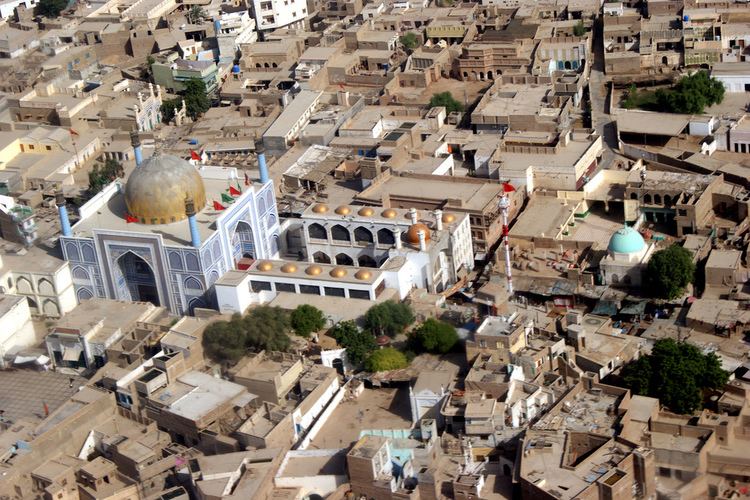Country Pakistan Time zone PST (UTC+5) Province Sindh | District SHAHBAZ Local time Sunday 10:03 PM Number of airports 1 | |
 | ||
Website lgdsindh.com.pk/tmasehwanshareef.htm Weather 32°C, Wind S at 6 km/h, 30% Humidity Neighborhoods Bander Mohalla, Kair calony, Shahbaz Colony | ||
Shahbaz qalandar qawwali journey to sehwan sharif with fanna fi allah
Sehwan (Sindhi: سيهوڻ شريف, Urdu: سیہون) (Sehwan Sharif) is a historic city located in Jamshoro District of Sindh province in Pakistan. Sehwan stands on the west bank of the Indus, 80 miles (130 km) north-west of Hyderabad (which is on the river's eastern bank).
Contents
- Shahbaz qalandar qawwali journey to sehwan sharif with fanna fi allah
- Map of SehwC481n Pakistan
- History
- Incident
- References
Map of Sehw%C4%81n, Pakistan
Due to the popularity of the sufi dargah in the town, the terms "Sehwan" and Qalandar" are often used interchangeably in Pakistani daily conversation. Sehwan is considered among the more important religious centers of Pakistan, alongwith the more officially-accepted shrines of Pakistan, such as the Data Ganj Bakhsh (Lahore), Bari Imam in Islamabad, and the lustrous tombs of the Suhrawardi sufis in Multan.
History
It is possible that the name Sehwan originates from "Siwistan" or "Seevistan", the kingdom of Raja Dahir which extended to the Punjab. It was conquered by Muhammad bin Qasim in 711, and two centuries later by Mahmud of Ghazni. An abortive attempt was made by the Mughal emperor Humayun to capture it on his way to Umarkot but it finally fell to his son Akbar. Before this, it was the capital of the Thatta Kingdom under Juni Bek.
The city is known for its Sufi patron saint Lal Shahbaz Qalandar who lived there in the 13th century.
Lal Shahbaz was a Sufi saint who is buried in Sehwan Sharif. It is a truly syncretic place, where Hindus and Muslims are equally welcome and worship together. Sehwan was once a major centre for Shaivism, and the hereditary guardian of the tomb is still a Hindu. It is told that there was a Shiva lingam right there in the shrine until the 1970s. Some Hindus are said to consider Lal Shahbaz an incarnation of a fourth century Sanskrit poet turned Shaivaite ascetic, others call him Jhule Lal, the god of the Indus. All these Hindu legends and beliefs have come together with the faith of the Muslims to create a truly extraordinary place.
The Shrine of Lal Shahbaz Qalandar attracts hundreds of thousands of visitors every year and a large number of people are served free meals. Another famous place is the inverted city, which may be the Debal Bandar of Raja Dahir. Manchar Lake, the largest freshwater lake in Pakistan, is a short distance from Sehwan Sharif.
Incident
On the 16th of February 2017, a suicide bomber triggered an explosion at the Shrine of Lal Shahbaz Qalandar, killing at least 83 people and injuring almost 250. The attack occurred during a praying session. The bombing took place at an 800 year old Shrine.
